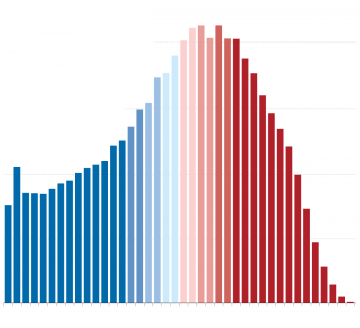Emily Badger in the New York Times:
 It’s true across many industrialized democracies that rural areas lean conservative while cities tend to be more liberal, a pattern partly rooted in the history of workers’ parties that grew up where urban factories did.
It’s true across many industrialized democracies that rural areas lean conservative while cities tend to be more liberal, a pattern partly rooted in the history of workers’ parties that grew up where urban factories did.
But urban-rural polarization has become particularly acute in America: particularly entrenched, particularly hostile, particularly lopsided in its consequences. Urban voters, and the party that has come to represent them, now routinely lose elections and power even when they win more votes.
Democrats have blamed the Senate, the Electoral College and gerrymandering for their disadvantage. But the problem runs deeper, according to Jonathan Rodden, a Stanford political scientist: The American form of government is uniquely structured to exacerbate the urban-rural divide — and to translate it into enduring bias against the Democratic voters, clustered at the left of the accompanying chart.
More here.
